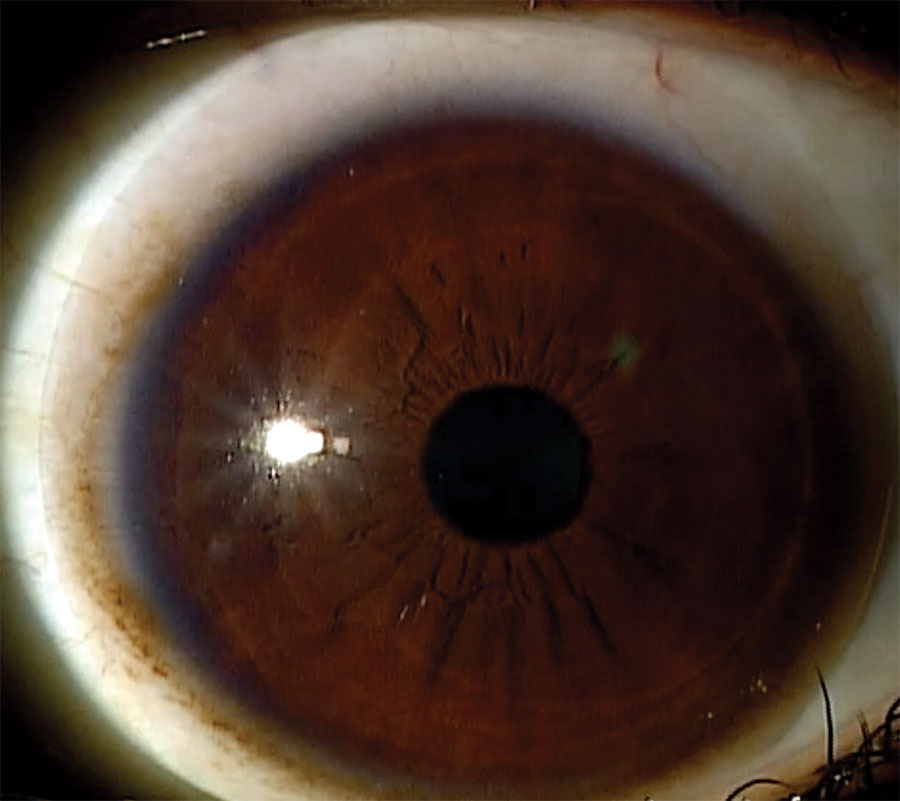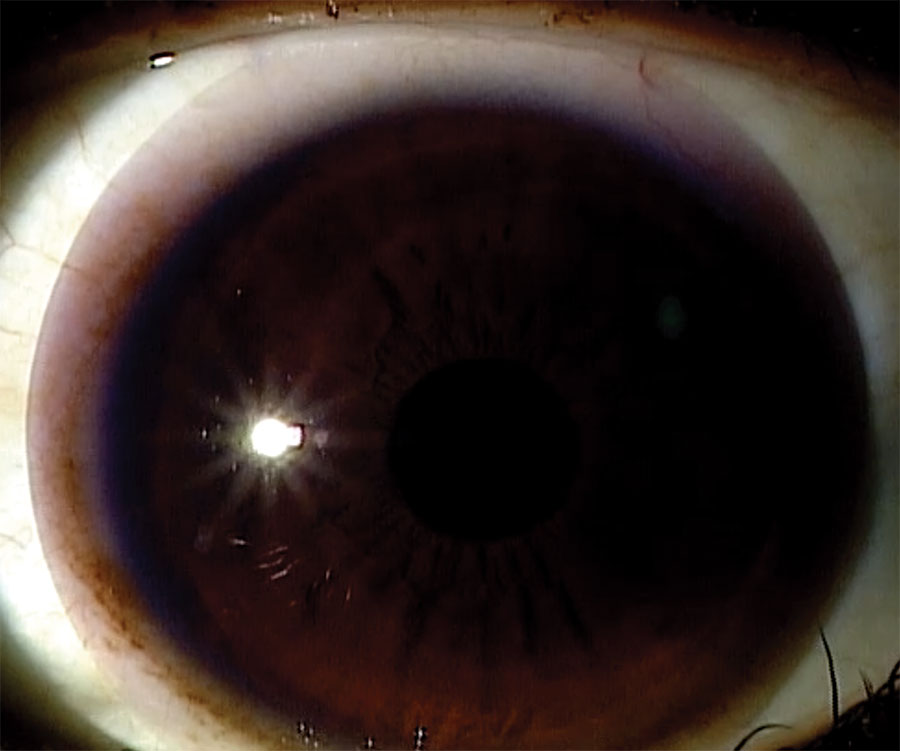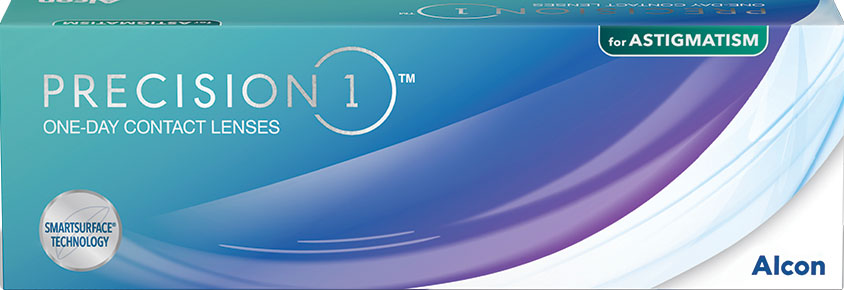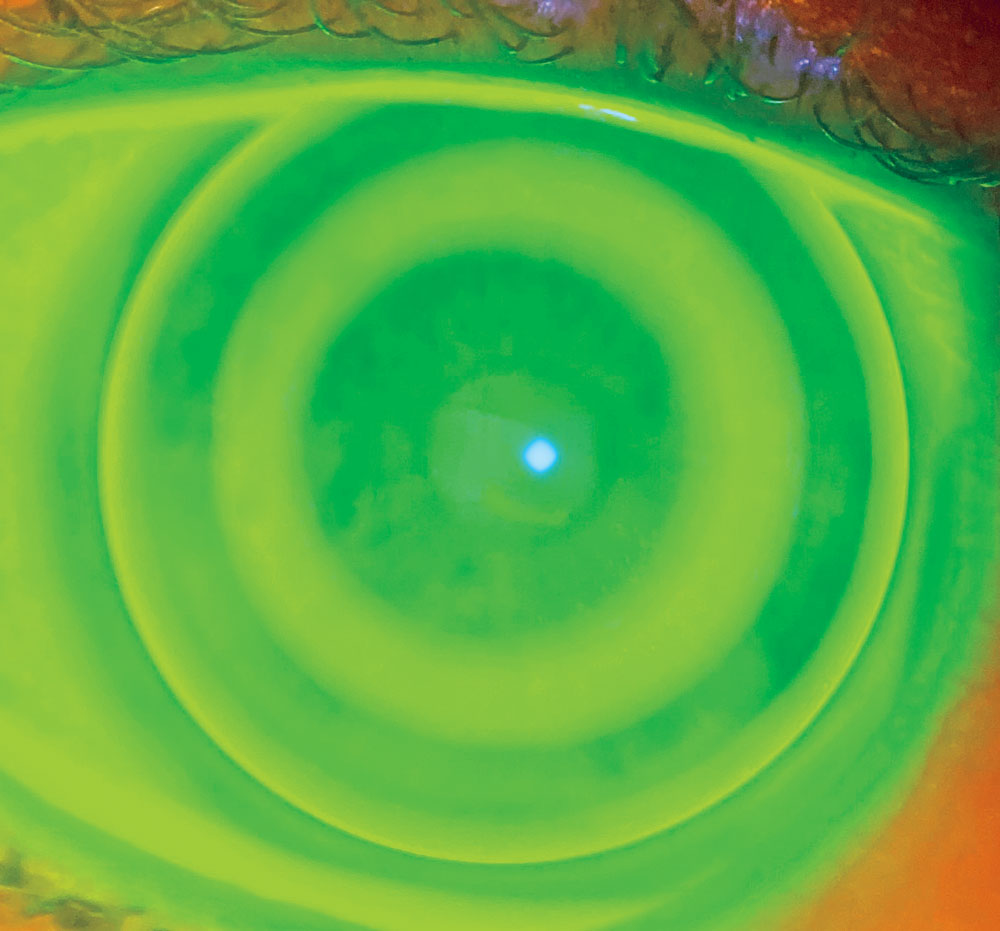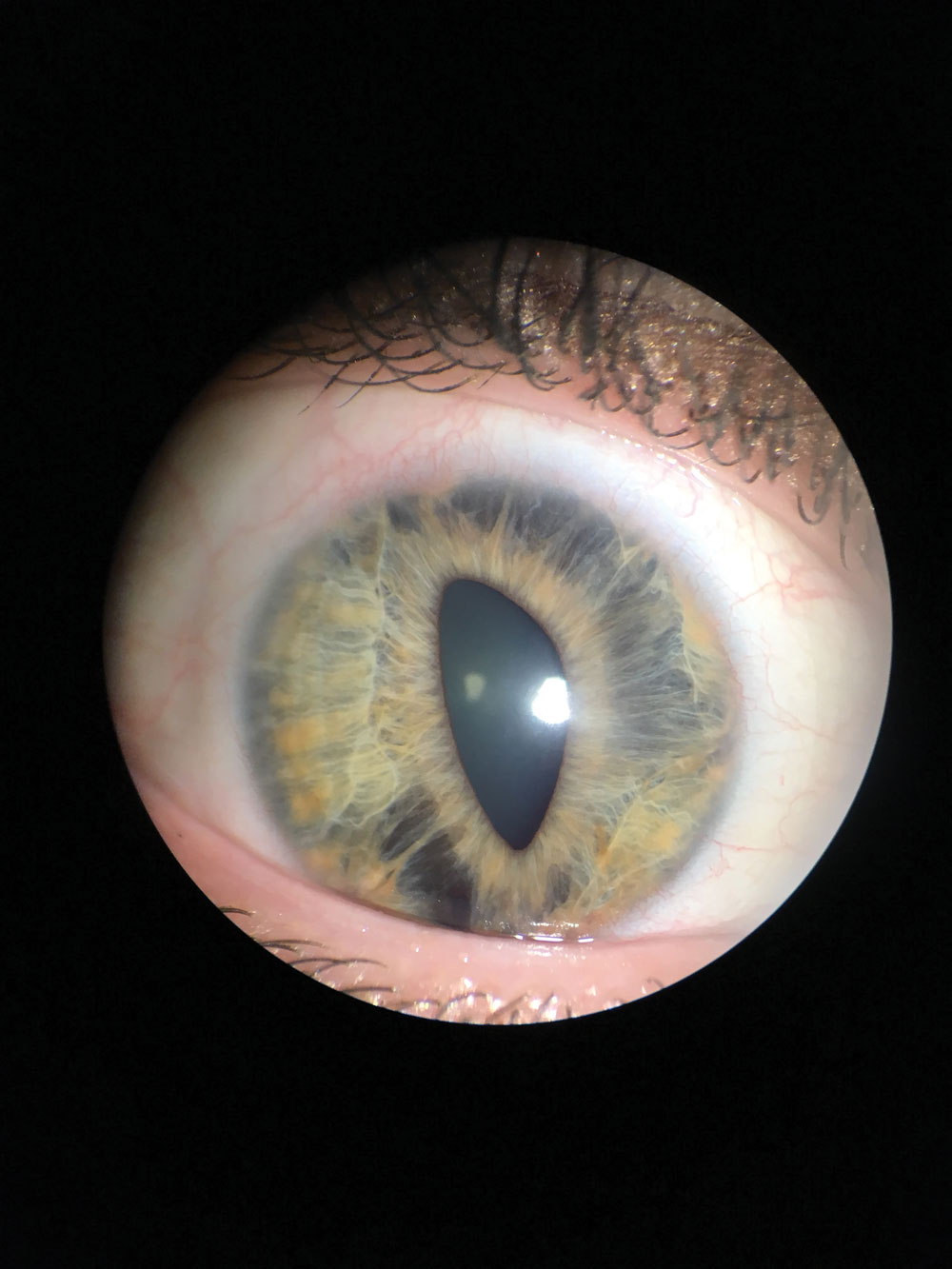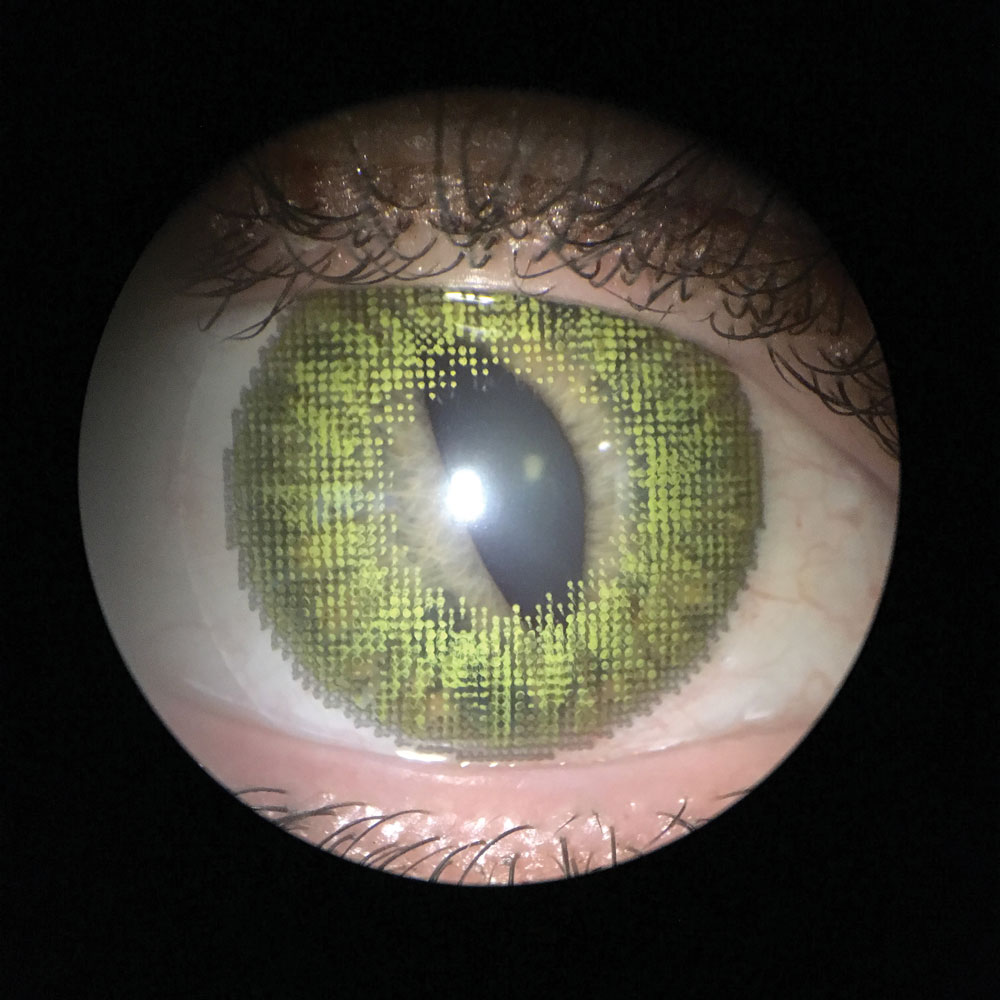By now, most optometrists have a few “old faithful” contact lenses they turn to for various patient types. There’s much to be said for the reliability of a product you know inside and out. Then, when new lenses debut, there’s always a bit of angst as you contemplate whether to stick with the tried and true or gamble on what’s touted as the latest and greatest.
For those interested in kicking the tires on some new lenses, the 2021 landscape looks bright. Increasing availability of toric and multifocal designs in both disposable and reusable lenses, along with much-requested incremental additions in prescription ranges for torics, have greatly expanded the options, says optometrist and professional education team leader Karen Walsh of the Centre for Ocular Research & Education at the University of Waterloo. In addition, new materials technology continues to chip away at the issue of discomfort.
“Beyond these, some voids are being filled too,” she says. “The increasing availability of approved myopia management contact lens designs is an important addition to practice, along with increasing choice of specialty lens materials and designs.”
Recent years have also seen the launch of a photochromic contact lens and a daily disposable with a business model that keeps optometrists in the driver’s seat on product distribution.
If you’ve lost track of what’s new and popular right now, here’s a look at some of the lenses that have hit the market in recent years, along with insight from optometrists on how these CLs might fit into your practice.
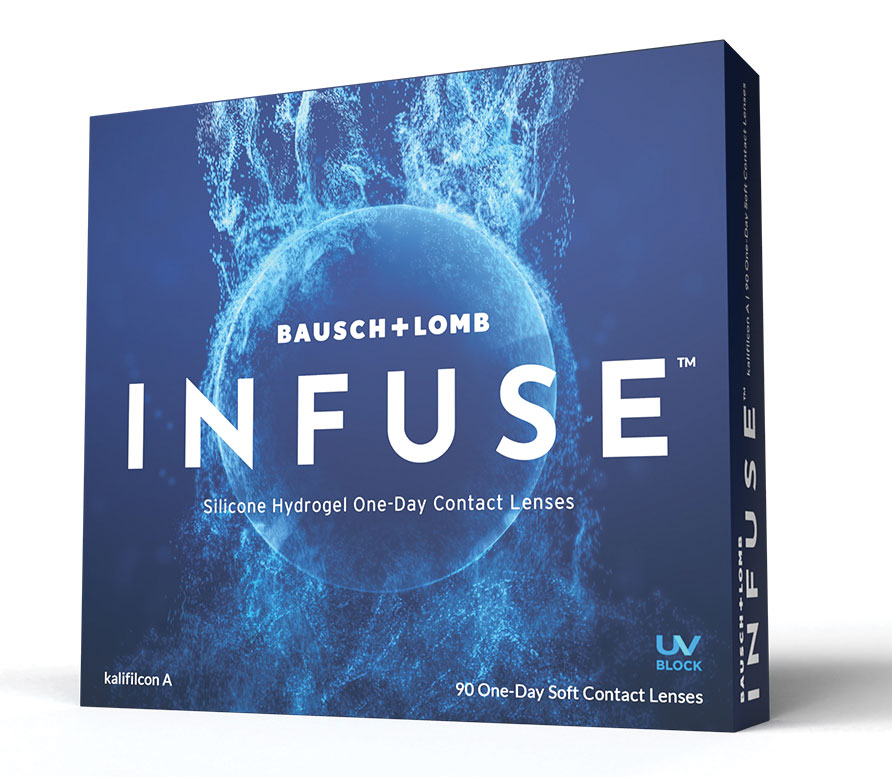 |
|
The hoopla about homeostasis that the DEWS II report kicked off was the inspiration for B+L’s Infuse lens. Click image to enlarge. |
Tackling Discomfort
The number one reason behind contact lens dropout is discomfort. With this in mind, Bausch + Lomb launched Infuse last year, which is designed to be as minimally disruptive to the tear film as possible, according to the company.
The lens is inspired by the Tear Film and Ocular Surface Society’s 2017 DEWS II report to better support the ocular surface, says optometrist Mark Schaeffer of MyEyeDr in Birmingham, AL. DEWS II called out loss of tear film homeostasis (i.e., equilibrium) as an instigator of dry eye.
Infuse, a silicone hydrogel lens in kalifilcon A material, features two osmoprotectants (erythritol and glycerin) and potassium, an electrolyte, all of which are intended to maintain ocular surface homeostasis. B+L’s name for this is “ProBalance Technology.” These elements are designed to help the lens, eye and cornea, and wearers generally get through a 16-hour day without having any issues, Dr. Schaeffer says.
Company literature touts the lens’s high moisture content (55%), low modulus (0.5MPa) and high Dk/t (134). Infuse is available in powers of -12.00D to +6.00D, with half-diopter steps in the -12.00D to -6.00D range and quarter-diopter steps thereafter.
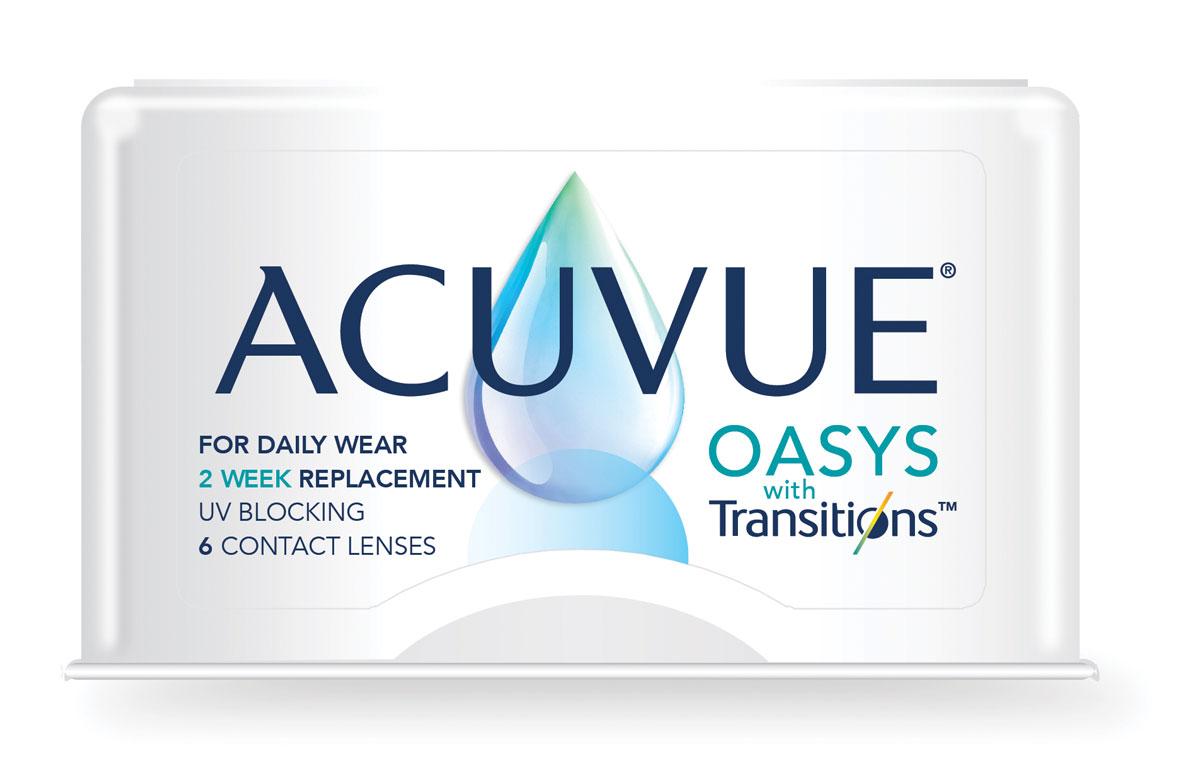 |
||
|
Sunglasses for your cornea: J&J worked with Transitions to develop a lens that darkens when exposed to certain frequencies of light, for eye protection and visual comfort. Click image to enlarge. |
Mindful that contact lens wear needs to be visually as well as physiologically comfortable, in 2019 Johnson & Johnson Vision launched Acuvue Oasys with Transitions, a two-week reusable product that continuously adapts from clear to dark and back based on ambient lighting conditions. The lenses become dark in 45 seconds when exposed to UV or HEV light and fade back to clear within 90 seconds in darker lighting, according to J&J. The lens also provides 100% protection against UVB rays, J&J says. The company says the lens filters up to 15% of light in the blue light range indoors and 55% outdoors.
While this lens doesn’t get as dark as a photochromic spectacle lens, it is beneficial for those patients who spend a good deal of time outdoors or play outdoor sports, says optometrist Mile Brujic of Bowling Green, OH. “It doesn’t replace sunglasses or a photochromic ophthalmic, but patients do notice a difference and are more comfortable when they are outside.”Looking back at pictures from his youth squinting at the camera on the soccer field, Dr. Brujic says this type of lens would have been helpful to him at the time.
“There’s a patient population who really benefits from a lens like this. Again, it doesn’t negate the need for sunglasses and sun wear protection, but the lens does have a place in the optometric space and works well in those individuals who enjoy playing outdoor sports but aren’t in a position where they can wear sunglasses all the time,” he suggests.
Three Corrections in One
Presbyopes with both astigmatism and spherical refractive error are not uncommon—but all-in-one lenses for them are. B+L’s Ultra Multifocal for Astigmatism (MFA) corrects ametropia, astigmatism and presbyopia in one shot and can be pulled from inventory in the practice. Launched in 2019, it remains the only toric multifocal available as a standard offering, B+L says. It is available in sphere from -6.00D to +4.00D with low and high add powers and five cyl options.
“If you think about multifocal toric patients, high astigmats generally come to mind,” says Dr. Brujic. “Where this lens has really risen above the other options is that it can correct small levels of astigmatism. Three-quarters of a diopter of cylinder can make these patients much more successful in their multifocal lens.”
The monthly replacement silicone hydrogel lens combines design ideas found elsewhere in B+L’s product line. The optics use the company’s 3-Zone Progressive multifocal concept: a center-near segment surrounded by concentric rings for intermediate and distance correction. To stabilize the toric element, the lens is ballasted in the lower half and thinner near the top to minimize displacement upon blinking; the company calls this “OpticAlign.” For comfort, the Ultra MFA uses the company’s dual polymerization approach—first, a silicone meshwork is formed to give the lens structure and then a second, hydrophilic polymer called polyvinylpyrrolidone “grows” around the silicone. B+L calls this two-stage process “MoistureSeal” and says it ensures sustained comfort throughout the day.
The Ultra MFA “is a very stable lens,” says Tom Arnold, OD, of Sugar Land, TX. “You don’t have mislocation issues, and you can’t have a multifocal toric that’s rotating.” He says he really believes in the optics because the Ultra MFA offers an intermediate zone. “Everyone has an iPad and computer, so the intermediate zone is very important. It’s also really nice to correct that -0.75D cylinder and have sharp, glasses-quality vision in a toric multifocal.”
The extra attention in recent years to astigmatism correction has been a plus for many practitioners.
“The biggest game-changers for me have been the multifocal toric contact lenses and the extended range toric lenses,” explains Suzanne Sherman, OD, assistant professor of optometric sciences and director of optometric services in the Department of Ophthalmology at Columbia University in New York. “I order a large volume of more custom lenses, and if the patient loses a lens and needs a replacement, it is more challenging to get a new one. Now, we can order them quicker and in bulk.”
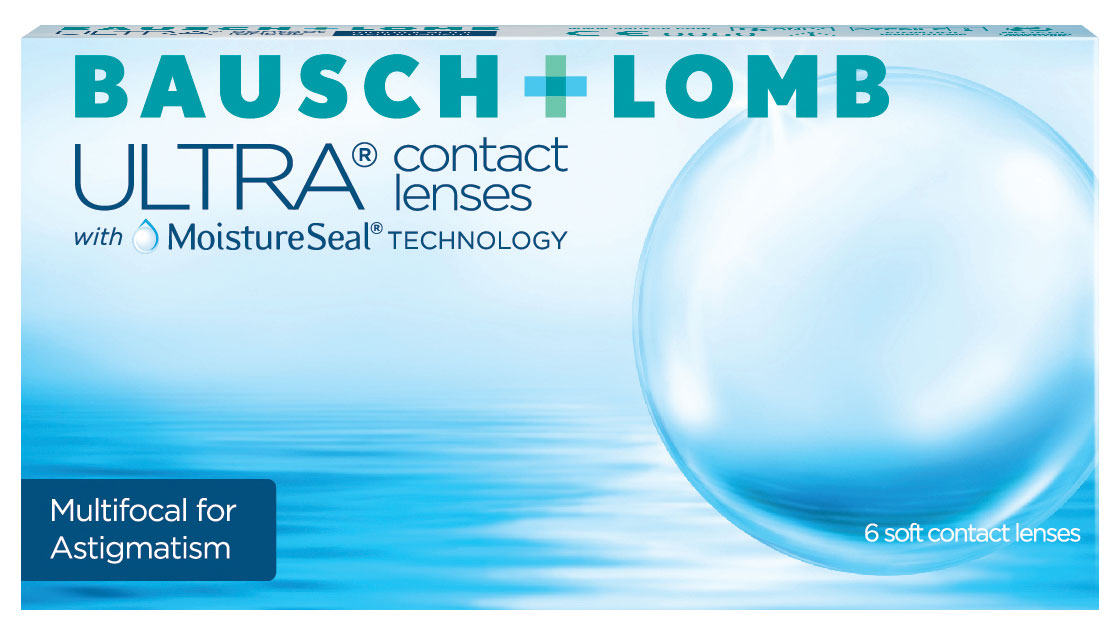 |
|
Three corrections in one lens: the Ultra Multifocal for Astigmatism covers all bases. Click image to enlarge. |
A Daily for the Masses
The convenience of daily lens disposal has been leaving patients speechless for nearly 30 years—the trouble is, more often than not the price has, too. Especially for lenses that include toric or multifocal correction in addition to sphere, the annual cost can approach $1,000 for materials alone. Attempts to ease the sticker shock can cut corners in ways that make the degrade the wearing experience.
Seeing the lay of the land, Alcon introduced a mid-tier contact lens line last year called Precision1, positioned in between its higher-end Dailies Total1 line and its budget-priced, non-SiHy Dailies Aqua Comfort Plus.
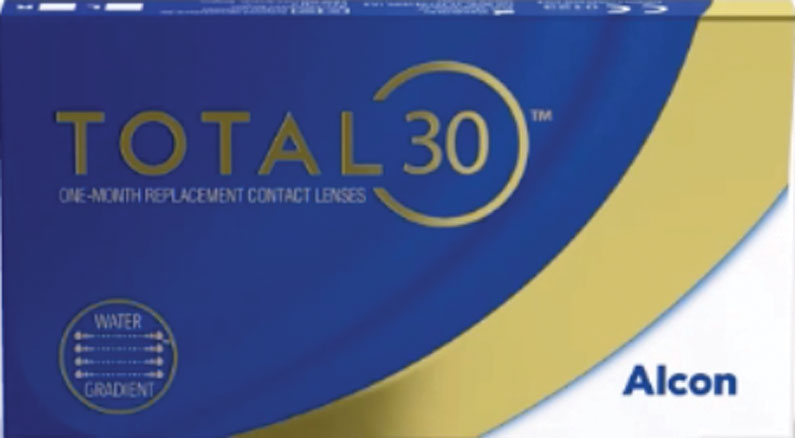 |
|
|
Alcon recently added a toric lens to its Precision1 line of daily disposables. The brand aims to deliver high quality in a mid-priced option. Coming in 2022, the company will look to reinvigorate the monthly replacement category with a new lens to be called Total30. Click images to enlarge. |
Precision1 is offered at a mainstream price, but it’s not a value brand, Dr. Schaeffer says. The company stresses that the lens shares many features of its high-end line to keep patient satisfaction strong, notably including its “water gradient” approach to moisture retention. The lens has a water content of 51% at the core and greater than 80% at the anterior surface.
Alcon says Precision1 can address the three most common reasons why new contact lens wearers drop out within the first year: poor vision, poor comfort and poor handling. The lens uses a new silicone hydrogel material, verofilcon A and includes a thin, permanently adhered layer of moisture. Alcon says this feature, known as SmartSurface, improves comfort and supports a stable tear film to reduce visual fluctuation.
Precision1 is available in a power range of -12.00D to +8.00D, with a 14.2mm diameter, an 8.3 base curve and a Dk/t of 100.
At the beginning of 2021, Alcon added a toric lens to its Precision1 line that comes in sphere powers of -6.00D to plano in quarter-diopter steps and cyl powers of -0.75D, -1.25D and -1.75D.
To reduce rotation, the lens uses prism ballast at the 8 and 4 o’clock points to help reduce lower lid interaction. The company says this design feature allows the lens to settle on-eye in under a minute and within 3º of ideal orientation, resulting in a 99% first fit success rate.
ORTHO-K: DON'T CALL IT A COMEBACK New entries into this category include J&J’s first lens for myopia control, the Acuvue Abiliti Overnight and X-Cel Specialty Contact’s REMLens. Abiliti Overnight, slated for release this by the end of this year, will be available in spherical and toric designs. The lens has been shown to reduce axial elongation in myopic children by 0.28mm on average over a two-year period, J&J states. The design is presumably based on the Menicon Z Night lens, as studies cited by J&J reference that product. Practitioners will use custom software that draws on corneal topography, refractive error and other data to create a lens fit that temporarily reshapes the cornea during overnight wear.
Another new option, REMLens, is available now from X-Cel and manufactured in Boston Equalens II material. Named for what X-Cel calls a “rapid eye molding” effect (hence, “REM”), the lens is appropriate for patients of all ages with low-to-moderate refractive error (up to -5.00D sphere, and up to -1.50D of cyl), the company says. The manufacturer touts an 89% first-fit success rate, a broad range of parameter flexibility (four fitting zones, five diameters, three optic zones) and an empirical fitting approach that makes use of an online fitting calculator. The calculator also maintains historical patient information through uploadable corneal topography maps and fluorescein images for convenience during follow-up visits. Additionally, CooperVision is now offering 5mm back optic zone diameter customization for its Paragon CRT ortho-K lenses so that astigmatic patients can take advantage of the modality. Paragon CRT is recommended for patients with <0.75D of corneal astigmatism based on K values, while CRT Dual Axis is designed for those with >0.75D of corneal astigmatism to enhance the cornea-to-fitting relationship. Because this offers more paracentral steepening than a 6mm zone, it may increase the efficacy of myopia management strategies, CooperVision says, assuming a dose-dependent relationship exists between paracentral steepening and ortho-K’s anti-myopia effect. |
Monthly Still Matters
Although daily disposables may garner the lion’s share of buzz among consumers, in reality the monthly replacement category is a huge market—one that’s been neglected of late, some say.
Next year, Alcon says, it will give this segment some overdue attention with a forthcoming lens called Total30.
Details are sketchy, but so far the company has shared that the lens has the same water gradient design as Precision1 and Dailies Total1. The Total30 launch will begin with a spherical lens in powers of -12.00D to +8.00D, with toric and multifocal options to follow within 12 to 18 months.
Although he’s not a contact lens wearer himself, Dr. Schaeffer recently test drove the lens on himself and found it to be so comfortable he couldn’t feel it on his eye throughout wear time. “I’m excited to see how the lens performs, as we haven’t seen new product development in this category for a while,” Dr. Schaeffer adds.
About two years ago, Menicon brought its longstanding monthly contact lenses to the United States market after many years of availability in Europe. Called Miru 1month, the product line includes spherical, toric and multifocal options. The lens has a Dk/t of 161 and further optimizes oxygen transmissibility by using a design that controls and minimizes thickness, Menicon says. Surface properties help to achieve high wettability and reduce adhesion of surface contaminants (e.g., bacterial biofilm, lipid deposits, cosmetics), according to the company.
A Colorful Day
Color-enhancing and color-changing lenses never really achieved mainstream success, but the category still sees periodic advancements aimed at increasing cosmetic appeal and encouraging patients to try the option on a whim to hopefully encourage at least occasional use. As proponents often point out, this is also a way to extend your contact lens practice to include patients without refractive error, as some emmetropes may find the cosmetic benefit appealing enough on its own terms.
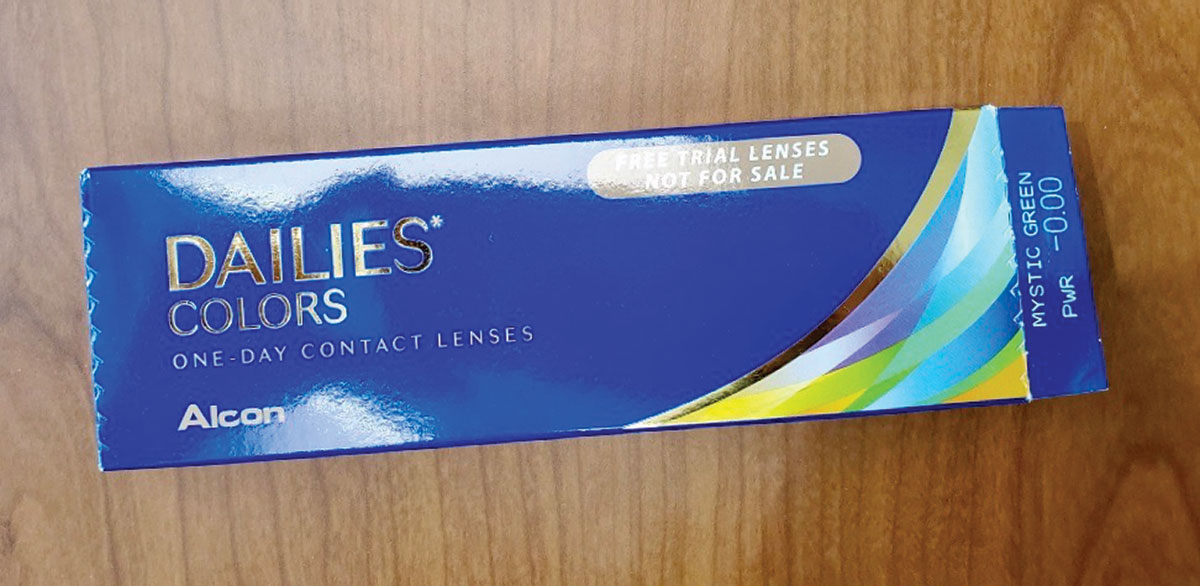 |
||
|
Colored lenses can appeal to both the fashion-consicious and those with iris abnormalities looking for aesthetic improvement, as in this case of iridocorneal endothelial syndrome before (top) and after (middle) application of an iris-print lens. Click images to enlarge. |
Alcon is now offering a colored contact line in a daily disposable option, with color enhancement and an eye-defining outer ring designed to make eyes appear bigger and brighter. Dailies Colors are available from -8.00D to plano, in half-diopter steps at the higher powers and quarter-diopter steps below -6.00D. Color choices are blue, hazel, gray and green. Water content is 59% and the Dk/t is 26.
“Dailies Colors has been an unexpected plus for me,” Dr. Sherman says. “I see patients with iris atrophy, polycoria or iris abnormalities express interest, and these lenses have even helped some patient’s photophobia.”
Myopia Gets Some Muscle
With myopia one of the most common ocular disorders worldwide, and momentum building for interventions, companies are taking notice. CooperVision recently received the first nod from the FDA for a lens to mitigate this condition, its MiSight 1 Day daily disposable. The omafilcon A lens is designed for children ages eight to 12 who have up to -6.00D of myopia.
“For years now, we’ve used off-label options for myopia management, such as distance-centered multifocals and compounded low concentration atropine drops, so it’s nice that the lens has gone through clinical trials, and the data is compelling,” Dr. Brujic says.
CooperVision’s lens uses a different concept of multifocality than a traditional presbyopia-correcting lens. The MiSight 1 Day is comprised of four concentric rings—two of which are “treatment zones” that create a myopic defocus of +2.00D; the other two are “correction zones” that neutralize myopia.
Over a three-year study period, MiSight 1 Day wearers experienced a 59% reduction in myopia progression by spherical equivalent refraction and 52% by axial length, CooperVision says. Visual acuity results were favorable, but some children need time to adapt to the lens’s effects.
“We are now scratching the surface of how we will manage myopia when we catch the condition early enough,” Dr. Brujic says. Also, Dr. Schaeffer notes, MiSight offers the health and safety of a daily lens, which is important for a practice’s most vulnerable patients: children and youth.
“We want to make sure they have the best safety profile, and that’s what this lens does,” Dr. Schaeffer suggests. “Not only does the lens help with long-term issues, but it also ensures short-term that these young patients are in the safest and healthiest wearing option.”
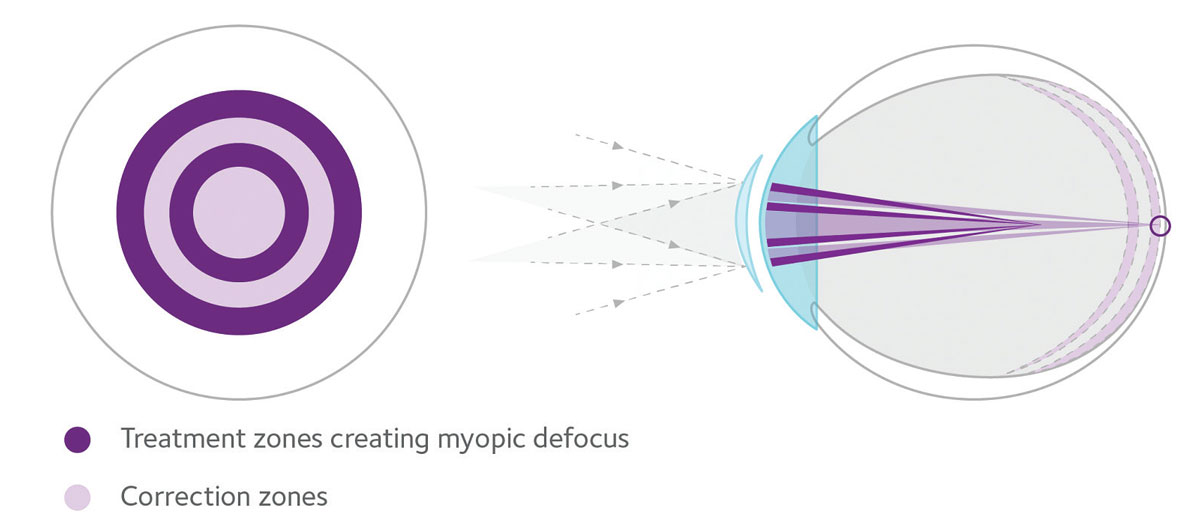 |
| The first soft contact lens approved for myopia mitigation, CooperVision’s MiSight 1 Day uses alternating concentric rings to correct refractive error while simultaneously inducing myopic defocus as a signal to slow axial elongation. Click image to enlarge. |
"Doctor-controlled" Daily
Optometrists hoping to keep CL sales within the practice now have an ally in Eyeris, a company founded by contact lens specialist Jeffrey Sonsino, OD. The Eyeris Daily is a hioxifilcon A daily disposable lens with an 8.5 base curve, a 14.3 diameter and a power range of -13.00 to +6.00. The material has the lowest modulus on the market and was designed by an industry veteran with successful track record in materials science, Dr. Sonsino explains.
The company doesn’t supply its product to online venues such as 1-800 Contacts, Hubble or Warby Parker, so it can’t be substituted by online middlemen, Dr. Sonsino says. The patient can purchase the Eyeris Daily in the OD’s office or online directly from the company. If patients choose to order the lens online, the prescribing doctor receives the margin as if it were purchased in their office, the company says.
Dr. Sonsino attributes the idea for the Eyeris to his experience as former chair of the American Optometric Association’s Contact Lens Section and current chair of the Academy’s new Innovation Council. In these roles, he says he’s been exposed to what the industry will be facing in the next five years, which he says, “isn’t pretty.”
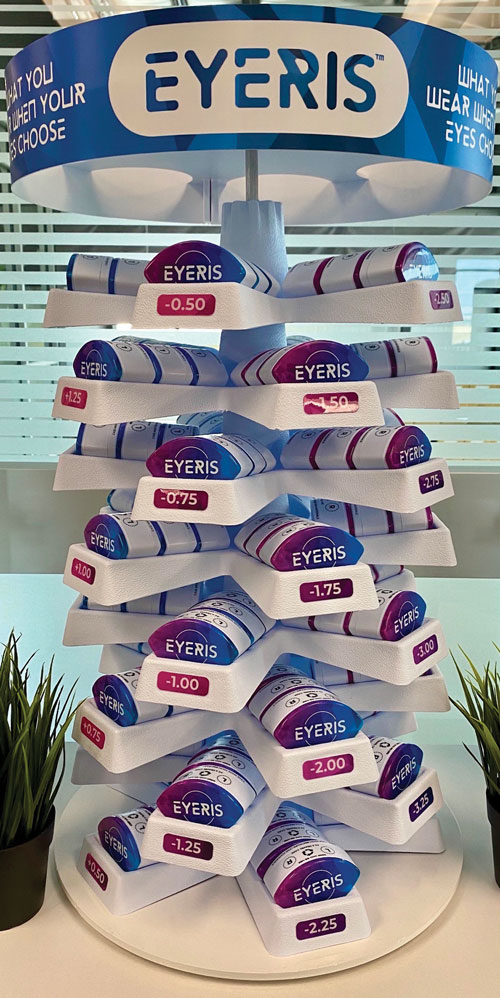 |
|
The Eyeris Daily is sold under a business model that aims to keep doctors in charge of product distribution, protecting practices against disreputable third-party suppliers. Click image to enlarge. |
“Disruptive middlemen are extremely well-funded and will not stop outspending us with lobbying efforts until they prevail,” Dr. Sonsino says. “We wanted to give private practice ODs a highly viable option in contact lenses that allows them to win against disrupters.
Here’s how the model works: Eyeris distributes the lens directly from its facility in Nashville. When doctors in the network prescribe and order the lens, a duplicate profile is automatically created on the consumer side of the website. Patients can go online and purchase the balance of what they didn’t buy in the office or opt for a monthly subscription, CEO Andy Barrow says. The subscription option insulates the OD from having to do anything differently and the patient can spread out the annual supply cost over the rest of the year, while paying the exact same box cost, he adds.
“When the patient spends less on contact lenses in the office, that means more money can be spent in your optical on glasses,” Mr. Barrow suggests.
The company is currently working on a center-distance bifocal lens, which could be launched next year, Dr. Sonsino says.
Wish Lists
With an eye on the future, optometrists weigh in on what they’d like to see in new CL designs.
“I would love to push the boundaries a little further on the comfort experience a contact lens can deliver,” Dr. Walsh says. “We have all experienced the feeling of hot, gritty eyes, come 6pm as we leave the office and computer behind. Imagine being able to wear a contact lens that could at least maintain the morning level of comfort throughout the day, if not actually being able to enhance comfort such that it felt better to wear a lens than not.”
Dr. Walsh also points to promising drug-delivering contact lenses on the horizon that will allow practitioners to treat a condition and remedy its symptoms in a sustained-release fashion. The first such lens will treat ocular allergy. Further down the line, she hopes drug delivery lenses will expand to treat acute infection.
Looking more to the horizon, Dr. Walsh anticipates that “the ability to create lenses that can support augmented vision both for people with low vision and for more general use with social media applications is exciting, as is the potential for automatically focusing lenses that can help presbyopes regain much younger-feeling vision.”
Dr. Arnold, who has a focus on specialty lenses, would like to see the majority of scleral manufacturers offer free-form designs where the first lens put on a patient is the right one.
Adds Dr. Sherman, “I find that some of the monthly multifocal lenses that offer distance or near focus achieve the best vision. A daily multifocal that provides high near correction as well as distance would make a lot of patients happy.” She’d also like to see more extended ranges and higher myopia prescriptions in dailies.
For patient convenience, Dr. Brujic suggests a soft lens that would have a different color in the bowl of the lens when it is positioned appropriately and ready to be applied to the eye. This would help both new and veteran CL wearers more easily determine if the lens is properly oriented and not inverted on the first try, he says.
Dr. Walsh believes the biggest opportunities lie on either end of the age spectrum—myopia management and presbyopia—categories that have recently been amplified due to increasing lens choices in each.
“Many patients can benefit in both groups, and with availability of lenses only set to increase, this is the area in which I feel most excited for the future,” Dr. Walsh says. “The ability to manage myopia in my young patients, and the option to recommend contact lenses to enhance the lives of my young-feeling, vibrant group of presbyopes, opens up increasing possibilities for how I care for my patients.”
| POPULAR CONTACT LINES EXTENDED If you have a favorite go-to lens but wish it offered greater Rx options or wear schedules, several companies have broadened some of their workhorse CL products to fit more patients. More Choices for Astigmatism In recent years, CooperVision has nearly doubled its prescription options for its Biofinity XR toric, with the lens sphere powers now ranging from -20.00D to +20.00D. Cylinder powers vary based on sphere, but options begin at -0.75D and go up to -5.75D. For hyperopic astigmats, Cooper recently expanded its MyDay torics with added plus powers. The SiHy lenses now come with expanded parameters that include +0.50DS to +6.00DS in 0.50D steps. Additionally, toric lens wearers now have a monthly replacement option with Alcon’s Air Optix Plus Hydraglyde for Astigmatism. Similar to other products in this brand, the monthly toric includes Alcon-specific technologies to increase comfort and lens stability. The lens is made of Alcon’s lotrafilcon B silicone hydrogel material and has a water content of 33% and Dk/t of 108. Sphere power range is -10.00D to +6.00D, and cyl powers are -0.75, -1.25, -1.75 and -2.25 at axes 10 to 180 in 10º steps. Alcon also added new parameters to its Dailies Aqua Comfort Plus Toric contact lens line, including a -2.25D cylinder, around-the-clock axes in core parameters and expanded high-minus sphere powers. Combined with its existing coverage, the new range includes 2,360 parameters and allows 94% of astigmatic patients to be a candidate for the lens, according to the company. Another expansion in this category comes from Bausch + Lomb. The company added to the parameters of its Biotrue OneDay for Astigmatism daily disposable. The expansion extends the full power range to -9.00D to +4.00D in three-cylinder powers of -0.75, -1.25 and -1.75; it also adds additional parameters in a -2.25 cyl. In another B+L update in this category, the company added a new -2.75D cyl option for its Ultra for Astigmatism contact lenses. The new option is available across all power ranges in the portfolio, from 9.00D to +6.00D. Toric lens patients now have another colored lens option with the recent introduction of ToriColors Comfort Cosmetic Lens by X-Cel Specialty Contacts. In partnership with Ireland-based cosmetic lens manufacturer PolyDev, the company is offering both low and mid-cylinder options as monthly disposable lenses in four colors. The lenses are available in powers of -4.00D to -2.00D in half-diopter steps and -2.50D to plano in quarter-diopters. Extended Wear Resurfaces More Options for Myopes Greater Choices for Two-Week Wearers |
Takeaways
“It’s such an exciting time to be a prescriber of contact lenses,” Dr. Schaeffer says. “Having all these technologies available now has made my job so much easier. When I hear patient complaints in the chair, I can connect the dots between what they’re expressing to me and a new path forward I can recommend by switching or prescribing them a new lens.” With these newer options within reach, he says, “ultimately, patients can have a better wearing experience.”
